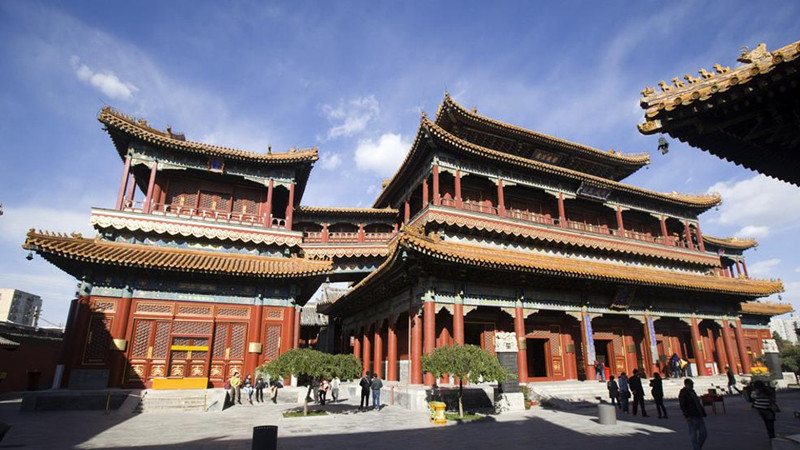Yonghe Palace is one of the few Tibetan Buddhist royal temples in Beijing. In history, it was the residence of the fourth son of Emperor Yongzheng and the birthplace of Emperor Qianlong. Later, it was renamed as a Huangjiao Temple, with a thriving fragrance and many precious ancient buildings and cultural relics worth visiting.
Han-Tibetan combination
One of the major characteristics of Yonghe Temple as a temple is that it is a fusion of two major schools of Buddhism, Chinese Buddhism and Tibetan Buddhism. When visiting Yonghe Temple, you can see the Chinese Buddhist Maitreya Buddha with a large belly in the Heavenly King Hall, and you can also see the bronze gilded statue of the Tibetan Buddhist Master Zongkaba in the Falun Hall.

In addition, the arrangement of the four Heavenly Kings in the Heavenly King Hall and the "Three Generations of Buddhas" in the Yonghe Palace Hall are also different from those in Han temples.
Precious cultural relics
The Yonghe Palace also houses treasures donated by the local government of Tibet during the Qing Dynasty to the royal family and this temple (some of the collections can be seen in the two cultural relics exhibition halls of the Panchen Temple and the Jietai Tower). The various halls in the temple offer numerous Buddha statues, Thangkas, and a large number of precious cultural relics.

Among them, the 500 Arhat Mountain carved in red sandalwood, the big Buddha niche carved in golden nanmu and the 18 meter high white sandalwood Buddha are the three wonders of the wood carving technology of the Lama Temple. The three wonders are very famous for the Maitreya Buddha in the Wanfu Pavilion, 18 meters from the ground and 8 meters underground, which is a complete white sandalwood carving. This tree originated in Nepal and was later dedicated to Emperor Qianlong.
Tour route
The main architectural complex of the Yonghe Palace consists of two cultural relics exhibition halls: the archway, the Zhaotai Gate (mountain gate), the Heavenly King Hall, the Yongyou Hall, the Falun Hall, the Wanfu Pavilion, as well as the Panchen Temple and the Jietai Tower. In addition, there are also buildings such as the East West Auxiliary Hall and the "Four Learning Hall". Just walk along the central axis to visit the Yonghe Palace, and the roads within the scenic area are not complicated, making it easy to find the various halls.
Buddhist activities
In addition to the regular Dharma meetings on the first, tenth, fifteenth, and thirtieth mornings of each lunar month, the Yonghe Palace also has significant ritual activities every year. During the ritual period, the number of tourists and believers will increase significantly. For detailed Buddhist activities, please refer to the official website: http://www.yonghegong.cn/node_7048463.htm .
Surrounding attractions
The Yonghe Palace and the Imperial Academy are separated by a road and are very close; Walk about 200 meters north from Yonghe Palace to Ditan Park; Walking east for about 15 minutes, you will find Dongzhimen Street, also known as "Guijie", which is a restaurant street in Beijing.
Travel Tips
Address: No.12 Yonghegong Street, Dongcheng District, Beijing
Tel: 010-84191906
Official website: http://www.yonghegong.cn/
Opening Hours: 09:00-16:30
Admission: CNY 25
